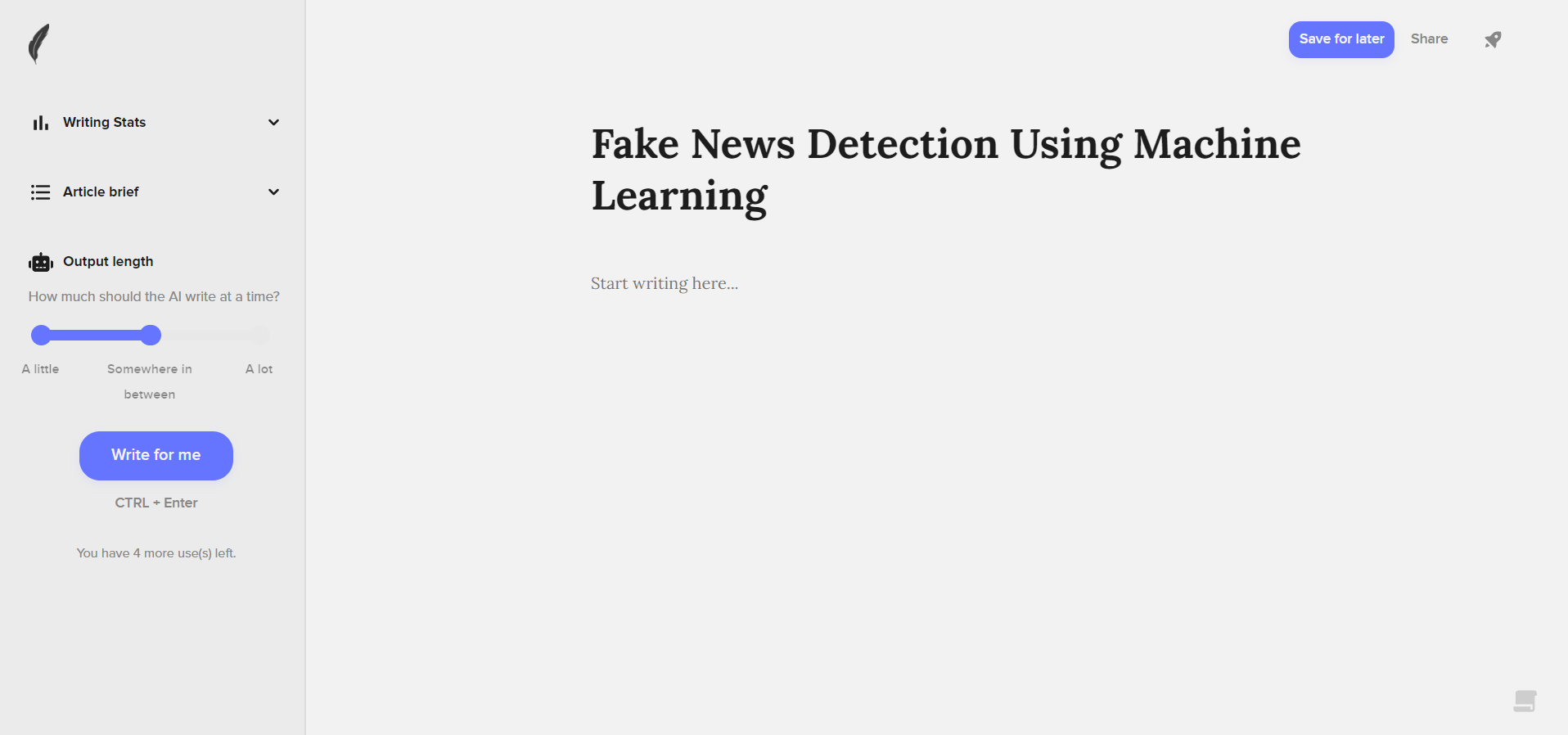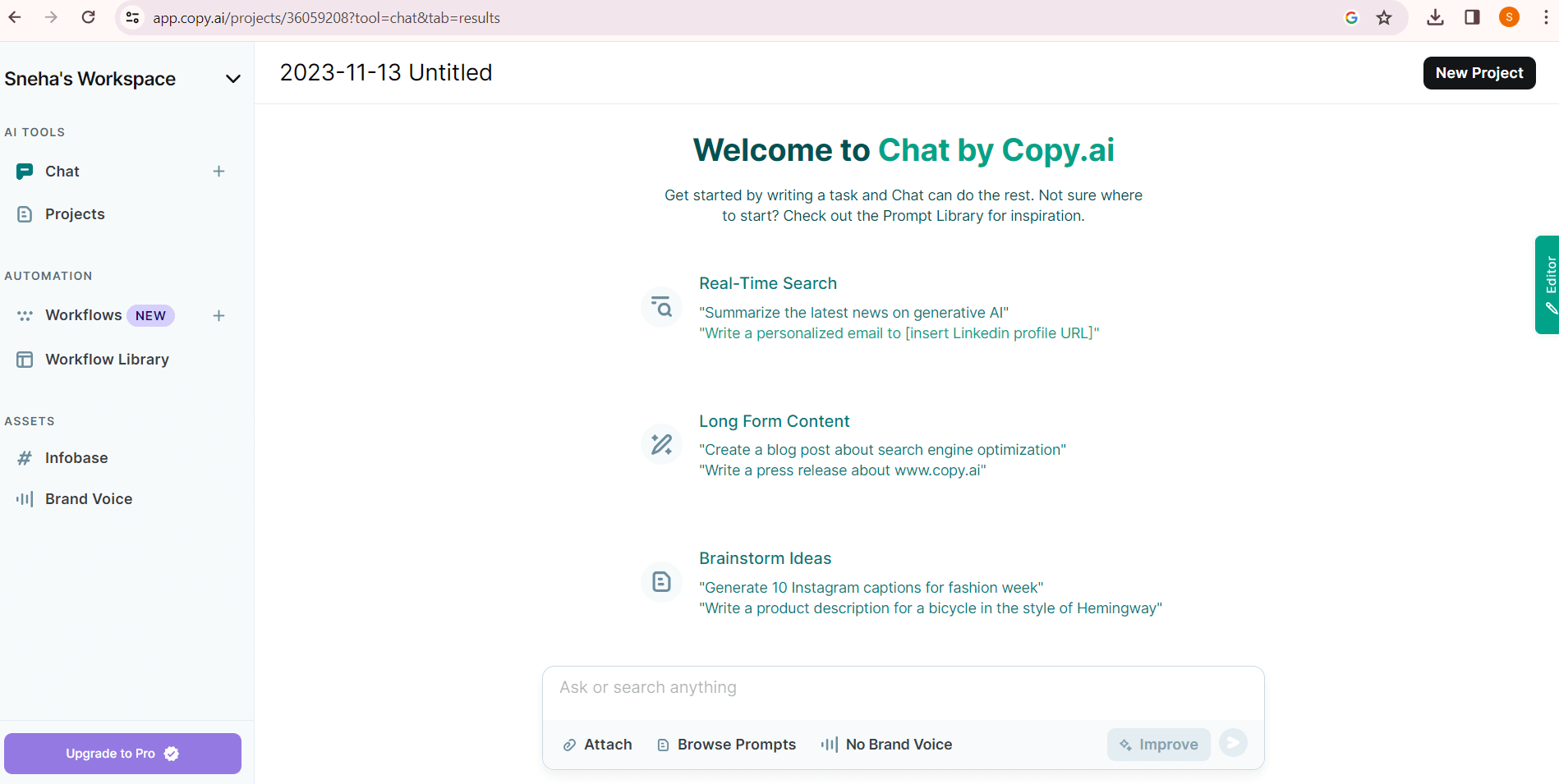Pros and Cons of AI-Generated ContentThe transformational potential of artificial intelligence(AI) is reshaping a variety of industries, including the food industry, supply chain management, chatbot, content, and image generation applications. The emergence of AI-generated content is one such use that is quickly gaining prominence. AI systems like OpenAI's ChatGPT are making significant progress in areas like picture generation, chatbots, and content creation. A range of viewpoints, from excitement over the effectiveness and innovation AI provides to worries about authenticity, ethical use, and the possible displacement of human creativity, are present alongside this increase in technology. Examining the benefits and drawbacks of artificial intelligence-generated content reveals a world where previously unheard-of possibilities coexist with difficulties that require serious thought. What is AI Generated content?AI-generated content, encompassing blogs, articles, marketing materials, and product descriptions, is crafted through the utilization of artificial intelligence systems. These programs, commonly known as AI content generators, function by processing user input, which typically includes specific words, phrases, and topics associated with the content being generated. This innovative approach to content creation represents a paradigm shift in how information is produced and disseminated in various industries. The AI then generates language that is logical and appropriate for the context using its training data and underlying algorithms. Businesses are starting to realize the procedure's potential advantages as it aims to speed up the writing process. Marketers can automate time-consuming and resource-intensive portions of their content development workflows by utilizing AI-generated content. This technology is especially useful for jobs involving content that needs to be repeated, freeing up human resources to work on more intricate and imaginative areas of content creation. Though AI-generated content increases productivity, there are several things to keep in mind. One significant problem is ensuring the created content is authentic and accurate. The application of AI is also fraught with ethical issues, particularly in the context of information dissemination. Integrating AI-generated content into diverse business processes requires finding a balance between using AI to increase productivity and preserving the material's quality and integrity. Working of AI-Generated Content: Converting Input Data into Customized OutputsAI-generated content is produced by a systematic procedure in which users provide predetermined text formats, themes, and keywords. After that, the AI tool uses intelligence to filter through the internet, find relevant content, and put together a logical copy that fits the required format. This dynamic process goes beyond only producing original content; it also includes refining and repurposing already-existing items. AI technologies can take content that an organization already has and improve it with the use of editing tools and information gathered from online searches. Content transformation is made possible by this adaptable feature. For instance, a blog post can be transformed into a variety of communication formats, such as social media postings or email drafts. The end product is a flexible and effective method for creating content that meets the various demands of marketers and enterprises. While some AI content generators are free to use, some charge for more advanced and comprehensive choices for creating material. This dual landscape, which offers both affordable entry points and premium solutions catered to the level of depth and complexity that customers seek, represents the dynamic nature of AI-generated content. Examples of AI-Generated Content Platforms

Figure 1: Shortlyai

Figure 2: copy.ai
Pros of AI-generated contentCost-Effectiveness:Compared to employing skilled human content writers, using AI-generated material is a more economical option. For simpler writing demands, AI solutions are an appealing substitute for human authors, whose costs can easily exceed several hundred dollars for each project. Example: While some AI writing tools are free to use, others have a fair monthly subscription fee (usually about $100) that covers the production of tens of thousands of words. Because of its affordability, AI-generated content is a sensible financial choice. Scalability and Efficiency:The effectiveness and scalability of AI-generated content are two of its biggest benefits. When compared to human writers, AI can generate content far more quickly. An AI tool can produce articles, blogs, and other written content at a rate that is unmatched, making turnaround times short. For instance, an AI tool may quickly evaluate data and produce a thorough piece in a matter of minutes, but a human writer would need much more time to gather material and produce content. Enhanced SEO:By examining a wide range of online publications, artificial intelligence (AI) content producers help to improve search engine optimization (SEO). By carefully selecting pertinent terms from this data, the AI improves the content's visibility in search engine results. For instance, content writers can use AI technologies to recommend SEO-friendly keywords, ensuring that the information they produce complies with search engine standards. Higher ranks are a result of this deliberate use of keywords in conjunction with human-written, credible content. Support for Writer's Block:For many writers, writer's block is a typical difficulty that can be successfully overcome with the help of AI-generated material. Artificial intelligence (AI) tools can help by offering comprehensive summaries and salient points when people find it difficult to produce authoritative content, particularly on foreign topics. For instance, an AI tool can provide advice and ideas to a writer who is having trouble coming up with ideas for an article. This can assist the writer in getting past writer's block and get their creative juices flowing. Localization and Personalization of Languages:Artificial intelligence not only effectively helps with content creation, but it also makes language localization for various regions easier. Furthermore, it is excellent at customizing material for different social media networks, making sure that the content it produces is suited to the unique needs of every website. An AI tool, for instance, can adjust material for various locations by accounting for cultural preferences and language peculiarities. Additionally, it is capable of producing social media material that complements each platform's unique tone and style. Cons of AI-Generated ContentIssues with Quality and Potential Plagiarism:Artificial intelligence (AI) generates content by relying on algorithms and pre-existing data, which can pose problems for preserving the material's uniqueness and quality. While AI technologies are capable of covering topics with clear-cut answers, they may need help to handle more subjective or nuanced content, which could result in the tone being lost. Example: When content is assembled from multiple sources without enough human inspection, plagiarism issues may arise because the AI may unintentionally create content that is identical to previously published works. Search engines may take notice of this, particularly if the information isn't coherent and flows well. Insufficient Uniqueness and Customization:Artificial intelligence is less creative and emotionally intelligent than human writers. Although it is capable of producing factual and educational content, it frequently fails to produce captivating and unique tales or stories that readers would find meaningful. For instance, it could be difficult for AI systems to create creative material, which is typically more interesting and shareable. Artificial intelligence (AI) is usually focused on filling in the details of an outline; it may find it difficult to comprehend user intent or give a human touch to the writing. Content Devalued by Algorithms:SEO results may be given priority by the algorithms utilized by AI technologies over the production of really authoritative and instructive material. AI-generated content could not be in line with search engines' algorithms, which favor information written by people for humans. Examples of these engines are Google and Bing. Example: If search engine optimization and keywords are prioritized over providing readers with a seamless and fulfilling experience, the result may be material that is optimized for search engine rankings. The relevance and quality of content may be diminished as a result. Still Requires Human Editing:Although AI tools are powerful, human intervention is still necessary for content creation, such as content evaluation and editing. Artificial intelligence (AI)-generated content may have errors or omissions that call for human review to guarantee consistency and quality. For instance, when artificial intelligence (AI) merges data from several sources into a single document, human editors are still required to spot and fix possible mistakes like misinterpreted adjectives or clerical errors in product descriptions. Unlocking AI Writing AssistanceAI-generated content can be used as writing assistance in a variety of ways. Research Assistance:AI-generated content can help writers with research, especially if they are having trouble coming up with ideas or organizing a topic. Certain artificial intelligence applications assist authors in focusing more narrowly and expedite the research process by offering thoughts and suggestions for more general subjects. For instance, if a writer is assigned to produce content on a wide topic, an AI tool can offer suggestions and insights to direct the study, facilitating the writer's ability to arrange ideas and compile pertinent data. Composing Short Text:Artificial intelligence (AI) tools are very good at creating a lot of information quickly. Because of this, they are perfect for managing routine tasks and producing short-form content where a more subtle or emotional touch may not be as important. Content that is appropriate for AI generators includes product summaries, ads, social media postings, ad copy, and short descriptions. Example: AI systems can swiftly develop the necessary short-form content when a business wants to publish several product descriptions or create concise and powerful social media messages. Verification and Enhancement:Draft papers can be optimized and proofread by AI techniques. Authors can use AI technologies to run their work through and get comments, ratings, and suggestions for improvement. By highlighting essential keywords and phrases, these tools help make sure the material is search engine optimized. Example: After finishing a draft, a writer can utilize an AI tool to find places that need work, proofread for spelling and grammar errors, and get suggestions for raising the content's overall quality. Translation Services:AI generators can help with text translation into several languages. This feature extends the content's reach to non-English speakers and guarantees that it appeals to a wide range of viewers. For instance, AI tools can assist in translating blog articles, marketing materials, and other information into several languages, increasing its accessibility and engagement for a larger audience. This can help a company extend its global presence. Making Templates:The creation of templates for a variety of uses, including emails and other standardized communications, can be facilitated by AI techniques. Some AI technologies streamline the process of producing consistent, polished material by providing users with pre-made templates that they can alter with relevant information. Example: An AI tool can create an email template for a business professional who wants to send customized emails to clients. The application may provide a variety of template choices, enabling the user to enter unique information for an effective and individualized communication plan. Identification and Differentiation of AI-Generated ContentEducators, academics, and content assessors must be alert in discerning the subtle differences that distinguish content generated by AI as the technology grows more proficient at imitating natural language. This guide delves into crucial indicators that facilitate the recognition and distinction of artificial intelligence (AI)-generated content, highlighting the unique characteristics that disclose its synthetic provenance.
|
 For Videos Join Our Youtube Channel: Join Now
For Videos Join Our Youtube Channel: Join Now
Feedback
- Send your Feedback to [email protected]
Help Others, Please Share









